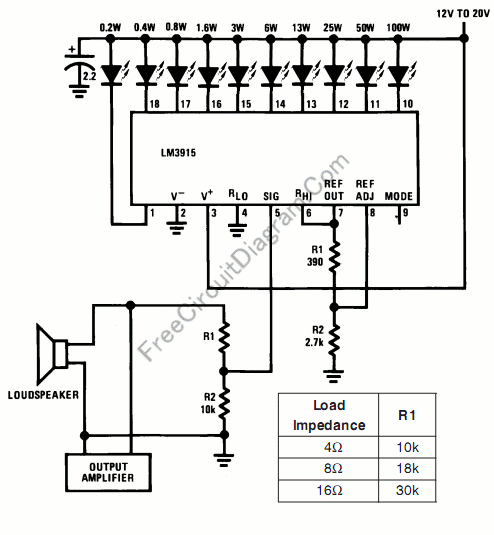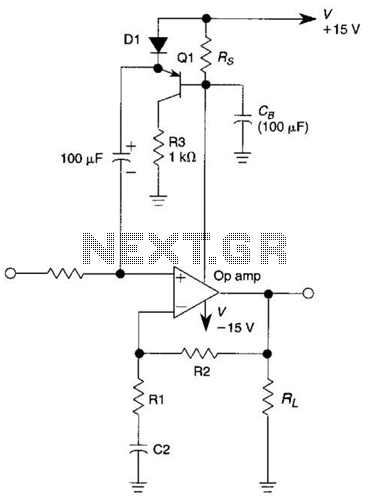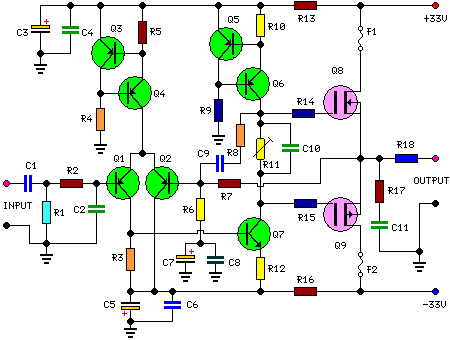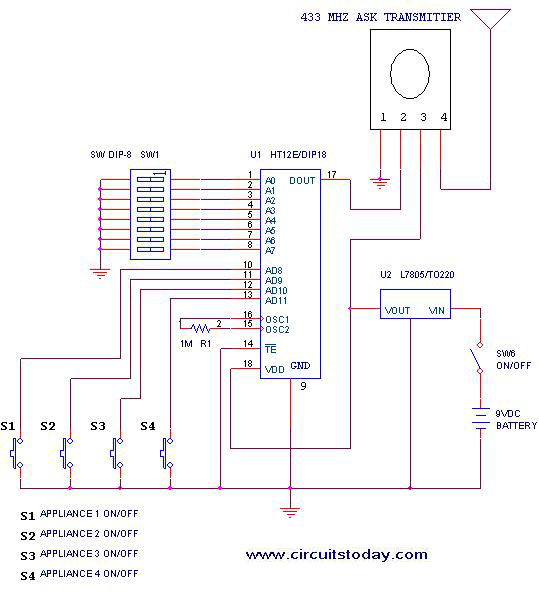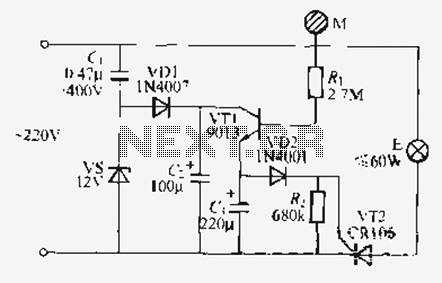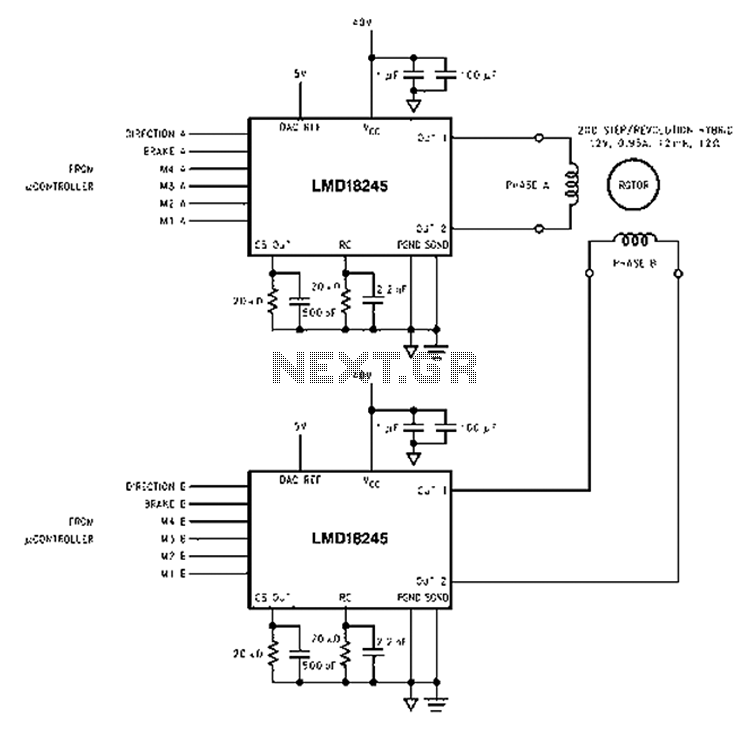
three channel audio mixer circuit
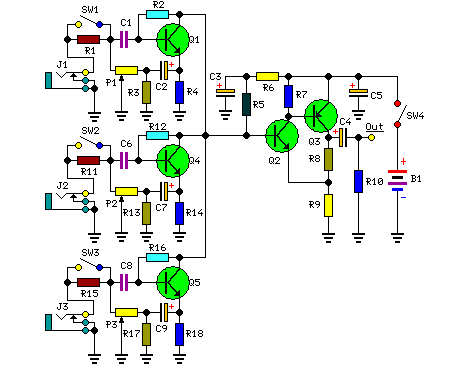
The modular Portable Mixer design featured on these web pages has gained popularity among many amateurs; however, some users have requested a simpler device primarily for mixing mono signals. This design aims to meet those requirements, incorporating three inputs with switchable high/low sensitivity and unique level-control circuits that provide high overload margins and low noise figures, proportional to gain-level settings. The circuit's low current consumption, achieved through a straightforward five-transistor design, allows the Mini Mixer to operate for extended periods on a standard 9V PP3 battery. When switches SW1, SW2, or SW3 are open, the input sensitivity is optimized for high-output devices such as CD players, tuners, tape recorders, iPods, MiniDisc players, and computer audio outputs. Conversely, when these switches are closed, the input sensitivity is adjusted for low-output, low-impedance moving coil or electret microphones. In cases where the 750 Ohm resistors (R3, R13, and R17) are difficult to source, two 1.5K resistors can be connected in parallel as a suitable replacement. To create a stereo mixer, all components must be duplicated, except for R6, C3, C5, SW4, and B1.
The Portable Mixer circuit is designed to be user-friendly and efficient, catering to both novice and experienced users in audio mixing applications. The three input channels allow for versatile connectivity, accommodating a range of audio sources. The inclusion of switchable sensitivity provides flexibility, enabling the user to adapt the mixer to various equipment without compromising audio quality.
The five-transistor configuration not only contributes to the low current consumption but also ensures that the mixer operates with minimal distortion, enhancing the overall audio fidelity. The high overload margins are crucial for preventing signal clipping during operation, which can degrade sound quality. The low noise figures are particularly beneficial in professional audio environments, where clarity and precision are paramount.
The circuit's design allows for easy assembly and modification. The use of common components, including the 9V PP3 battery, ensures that users can easily maintain and power the mixer. The option to replace the specified resistors with commonly available alternatives provides additional convenience, making the design accessible even for those with limited electronic component resources.
For users interested in expanding their setup to stereo mixing, the straightforward duplication of components simplifies the process. This scalability makes the Portable Mixer a versatile tool for various audio mixing scenarios, from home studios to live sound applications. Overall, the design balances simplicity and functionality, meeting the needs of users seeking an effective solution for mono audio mixing.Although the modular Portable Mixer design available on these web pages has become a hit for many amateurs, some correspondents required a much simpler device, mainly for mixing mono signals. This design should fulfil their needs, featuring three inputs with switchable high/low sensitivity and unusual level-control circuits, providing high overloa
d margins and low-noise figures, proportional to gain-level settings. Low current consumption due to a simple, five-transistor circuitry, allows the Mini Mixer to be powered by a common 9V PP3 battery for many hours. * When SW1, SW2 or SW3 are open the input sensitivity is suited to high-output devices like CD players, tuners, tape recorders, iPods, miniDisc players, computer audio outputs etc.
* When SW1, SW2 or SW3 are closed the input sensitivity is suited to low-output, low-impedance moving coil or electret microphones. * Sometimes, the 750 Ohm value for R3, R13 and R17 resistors could be not easy to find. In this case, two 1K5 resistors wired in parallel can be used to replace each item. * To make a stereo mixer, all the parts must be doubled excepting R6, C3, C5, SW4 and B1. 🔗 External reference
The Portable Mixer circuit is designed to be user-friendly and efficient, catering to both novice and experienced users in audio mixing applications. The three input channels allow for versatile connectivity, accommodating a range of audio sources. The inclusion of switchable sensitivity provides flexibility, enabling the user to adapt the mixer to various equipment without compromising audio quality.
The five-transistor configuration not only contributes to the low current consumption but also ensures that the mixer operates with minimal distortion, enhancing the overall audio fidelity. The high overload margins are crucial for preventing signal clipping during operation, which can degrade sound quality. The low noise figures are particularly beneficial in professional audio environments, where clarity and precision are paramount.
The circuit's design allows for easy assembly and modification. The use of common components, including the 9V PP3 battery, ensures that users can easily maintain and power the mixer. The option to replace the specified resistors with commonly available alternatives provides additional convenience, making the design accessible even for those with limited electronic component resources.
For users interested in expanding their setup to stereo mixing, the straightforward duplication of components simplifies the process. This scalability makes the Portable Mixer a versatile tool for various audio mixing scenarios, from home studios to live sound applications. Overall, the design balances simplicity and functionality, meeting the needs of users seeking an effective solution for mono audio mixing.Although the modular Portable Mixer design available on these web pages has become a hit for many amateurs, some correspondents required a much simpler device, mainly for mixing mono signals. This design should fulfil their needs, featuring three inputs with switchable high/low sensitivity and unusual level-control circuits, providing high overloa
d margins and low-noise figures, proportional to gain-level settings. Low current consumption due to a simple, five-transistor circuitry, allows the Mini Mixer to be powered by a common 9V PP3 battery for many hours. * When SW1, SW2 or SW3 are open the input sensitivity is suited to high-output devices like CD players, tuners, tape recorders, iPods, miniDisc players, computer audio outputs etc.
* When SW1, SW2 or SW3 are closed the input sensitivity is suited to low-output, low-impedance moving coil or electret microphones. * Sometimes, the 750 Ohm value for R3, R13 and R17 resistors could be not easy to find. In this case, two 1K5 resistors wired in parallel can be used to replace each item. * To make a stereo mixer, all the parts must be doubled excepting R6, C3, C5, SW4 and B1. 🔗 External reference
